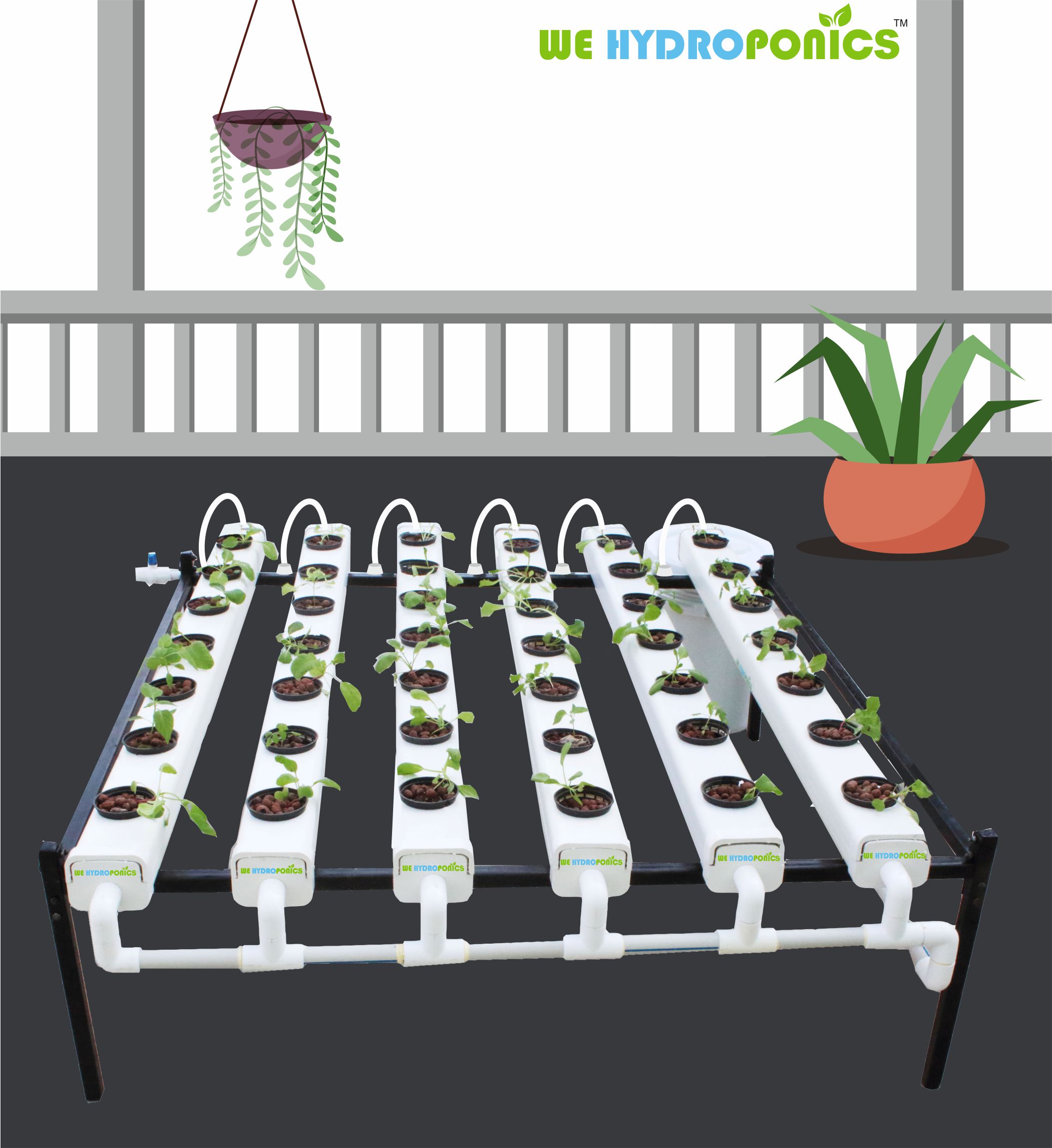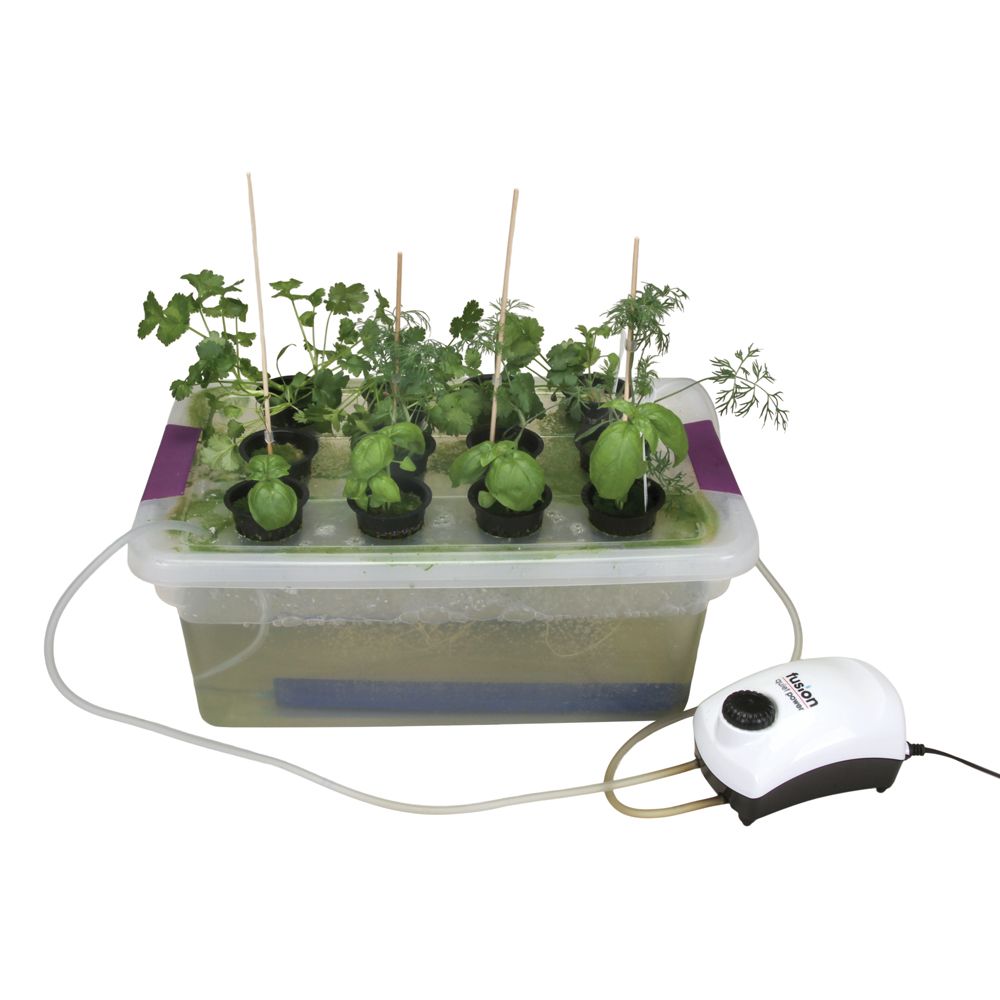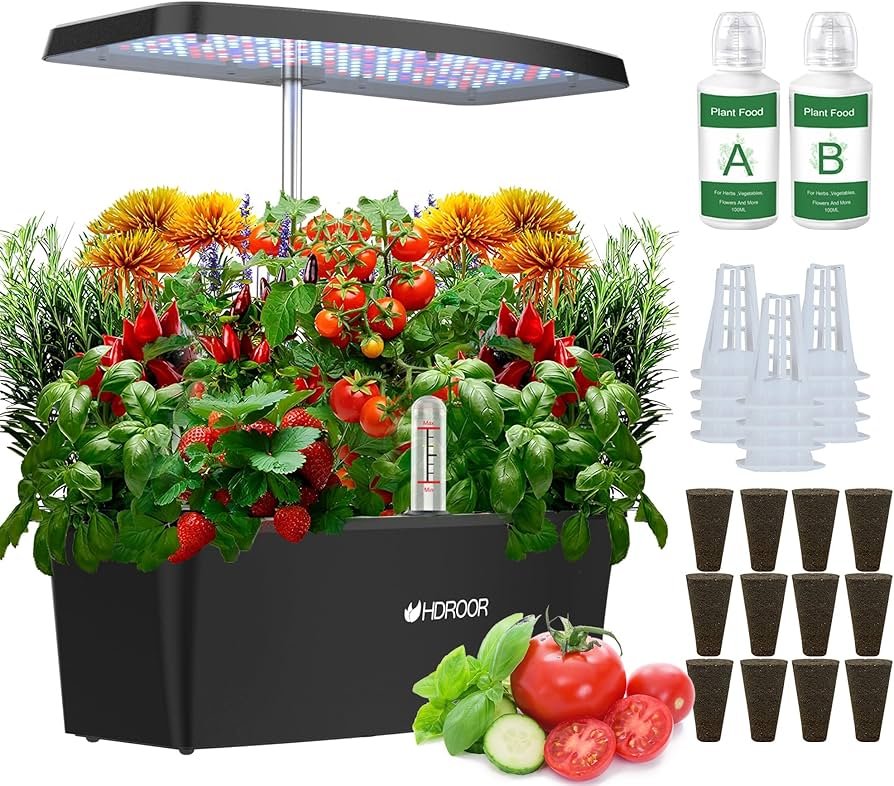Hydroponics kits are changing the way we grow plants. They allow you to grow without soil, using water and nutrients.
Imagine fresh herbs or vegetables growing right in your home, even if space is tight. Hydroponics makes it possible with its efficient systems. This method is not only space-saving but also water-efficient. You don’t need a garden or a yard.
Just a small area and a hydroponics kit. With indoor gardening gaining popularity, these kits are becoming a favorite. They are easy to set up and require minimal maintenance. Perfect for beginners and experienced gardeners alike. Whether for fresh produce or a unique hobby, hydroponics offers a fun way to explore gardening. Dive into this soil-free gardening adventure and discover the joy of growing your own plants.

Credit: www.wehydroponics.com
Introduction To Hydroponics
Have you ever wondered how plants can thrive without soil? Hydroponics is the answer. This innovative method of gardening allows you to grow your favorite plants using nutrient-rich water instead of traditional soil. Whether you’re a seasoned gardener or a curious beginner, hydroponics offers an exciting way to cultivate plants indoors or outdoors, regardless of the space available. Imagine fresh herbs, veggies, and even flowers growing right in your living room!
What Is Hydroponics?
Hydroponics is a method of growing plants without soil, using water enriched with essential nutrients. It relies on a controlled environment to supply plants with everything they need for growth. This technique uses a variety of systems, such as deep water culture, nutrient film technique, and aeroponics. Each system has its unique approach to deliver water and nutrients directly to the plant roots.
Picture having a mini-farm at home with no mess from soil and mud. Hydroponics systems range from simple setups like water-filled buckets to advanced systems with timers and pumps. These systems can be tailored to fit your space and budget, making hydroponics accessible to anyone.
Benefits Of Soil-less Gardening
Hydroponics offers numerous advantages over traditional gardening methods. First, it saves space by allowing vertical growing, which is ideal for small apartments. You can have fresh produce without needing a garden or backyard. Additionally, hydroponics uses less water compared to soil gardening, making it environmentally friendly.
Imagine harvesting fresh lettuce in your kitchen every week. With hydroponics, plants grow faster because they receive nutrients directly, without needing to seek them out in soil. You can enjoy fresh herbs and vegetables year-round, regardless of the climate outside. Soil-less gardening also reduces the risk of pests and diseases, as there is no soil to harbor them.
Have you considered how hydroponics could change your gardening habits? Whether you’re aiming to save space or protect plants from pests, this method offers a sustainable and efficient solution. What’s stopping you from trying hydroponics today?

Credit: www.carolina.com
Components Of A Hydroponics Kit
The world of hydroponics offers a fascinating way to grow plants. No soil needed. To start, a hydroponics kit is essential. These kits contain key parts to nurture your plants. Understanding these components helps ensure successful growth. Let’s explore the essential elements and optional accessories of a hydroponics kit.
Essential Elements
The reservoir holds the nutrient solution. It’s where plant roots absorb nutrients. The growing medium supports the plants. Clay pebbles or rock wool often serve this purpose. A nutrient solution is vital. It provides minerals and nutrients plants need. The air pump and air stone add oxygen to the water. This keeps roots healthy. The water pump circulates nutrients, ensuring even distribution. A pH meter checks the water’s acidity or alkalinity. Keeping pH balanced is crucial. Finally, grow lights simulate sunlight. They enable photosynthesis when natural light is scarce.
Optional Accessories
A timer automates lighting and watering schedules. This ensures consistency and saves time. A thermometer monitors temperature. Keeping a stable climate benefits plant growth. Humidity sensors track moisture levels. Adjusting humidity can improve plant health. Plant support structures help larger plants stay upright. They prevent damage and encourage growth. Grow tents create a controlled environment. They shield plants from pests and fluctuations. pH adjusters modify the water’s pH. They help maintain optimal conditions for plant growth.
Setting Up Your Hydroponics System
Setting up a hydroponics system can feel overwhelming at first. But with the right steps, it becomes an easy and fun task. Hydroponics allows you to grow plants without soil. It uses water, nutrients, and a growing medium. This method is efficient and saves space. Whether you’re a beginner or seasoned gardener, setting up your system correctly is key. Let’s dive into the essential steps to get your hydroponics kit up and running.
Step-by-step Guide
First, choose a suitable location for your system. Ensure it has access to light and is free from extreme temperatures. Next, assemble your hydroponics kit as per the instructions. Each kit may have different parts, so follow the guide closely. Fill the reservoir with water and add the nutrients. Ensure the pH level is balanced. Most plants prefer a pH between 5.5 and 6.5. Now, place your plants in the growing medium. Make sure roots are in contact with the water. Finally, set up the grow lights if natural light is not enough. Adjust them to mimic the sun’s natural cycle.
Common Mistakes To Avoid
Many beginners often overwater their plants. Hydroponics requires careful water management. Ensure you do not drown the roots. Another mistake is neglecting the pH level. Regularly check and adjust it to prevent plant stress. Some may overlook system maintenance. Clean the system regularly to prevent algae growth. Also, avoid overcrowding your plants. Space them well to allow proper air circulation. Lastly, do not ignore the nutrient levels. Monitor them to ensure plants receive the right amount.
Choosing The Right Plants
Choosing the right plants for your hydroponics kit is crucial. Not every plant thrives in a soil-less setup. Some plants adapt better and grow faster. Understanding which plants to choose saves time and effort. It also ensures a successful harvest.
Before starting, consider what you want to grow. Each plant requires specific care. This impacts growth and yield. Selecting the right plants helps achieve your gardening goals. This section will guide you through choosing suitable plants.
Best Plants For Hydroponics
Leafy greens like lettuce and spinach are great choices. They grow fast and require minimal maintenance. Herbs such as basil and mint also do well. Their small size fits compact systems. Tomatoes and peppers can thrive too. Choose varieties bred for container growth. This ensures better results.
Factors To Consider
Consider the space available in your hydroponics setup. Larger plants need more room. Check the light requirements of the plants. Some need full sun, others prefer shade. Temperature tolerance is another factor. Plants like peppers need warmth to grow. Nutrient needs vary between plant types. Ensure your nutrient solution meets these needs.
Think about the time you can dedicate to care. Some plants need more attention. Choose plants that match your gardening experience. Beginners might prefer low-maintenance options. Advanced gardeners can explore challenging plants. This balance ensures satisfaction and success.
Maintaining Your Hydroponics Garden
Keeping a hydroponics garden healthy requires attention and care. Regular maintenance ensures plants grow strong and yield well. You need to manage nutrient solutions and monitor plant health. These tasks are essential for a thriving garden.
Nutrient Solutions
Nutrient solutions play a key role in plant growth. They provide essential minerals and vitamins. Choose the right mix for your plants. Regularly check the solution’s pH levels. A balanced pH supports nutrient absorption. Replace old solutions with fresh ones. This prevents the build-up of harmful substances.
Monitoring Plant Health
Healthy plants show vibrant colors and steady growth. Check leaves for signs of discoloration. Yellow leaves may indicate nutrient deficiencies. Inspect roots for rot or decay. Strong roots lead to healthy plants. Keep an eye on pests. They can harm plant growth. Use natural methods to control pests. This ensures a safe environment for your plants.
Troubleshooting Common Issues
Discover solutions to common hydroponics kit issues. Ensure proper light and nutrient levels for healthy plant growth. Regularly check water pH and temperature to prevent system failures.
Growing plants with a hydroponics kit can be an exciting journey into the world of soilless gardening. Yet, like any venture, it comes with its own set of challenges. Troubleshooting common issues is part of the learning curve. These hurdles can seem daunting at first but overcoming them is part of the fun. Let’s dig into some frequent problems you might face and how to tackle them effectively.Pest Control
Even without soil, pests can find their way into your hydroponic setup. These uninvited guests can disrupt your garden’s harmony. To manage them, consider using natural predators like ladybugs or beneficial nematodes. You can also opt for organic insecticidal soap. Regularly inspecting your plants for signs of infestation is crucial. Catching the problem early makes it easier to address. Keeping your hydroponic system clean is another effective strategy. Wipe down surfaces and equipment to remove any potential pest eggs or larvae. This simple routine can prevent many pest-related issues. How often do you check your setup for pests?Dealing With Algae
Algae is a common nuisance in hydroponics, often caused by light exposure to nutrient solutions. It can compete with your plants for nutrients and oxygen. Covering your nutrient reservoir can block light and help prevent algae growth. Blackout materials or opaque covers work well for this purpose. Another tip is to check for leaks in your system, as they can create damp environments perfect for algae. Maintaining proper pH levels can also inhibit algae growth. Use a pH meter to regularly test your solution. Have you noticed any green film in your setup lately? If algae persists, consider reducing the light intensity or duration. Sometimes, a simple adjustment can make a big difference. Keeping your nutrient solution moving with an air pump can also deter algae. A little vigilance goes a long way in keeping your hydroponic garden thriving.Innovative Techniques In Hydroponics
Hydroponics offers innovative ways to grow plants without soil. These methods bring efficiency and creativity to urban and home gardening. Many are adopting these techniques for their space-saving and sustainable benefits. Let’s explore some groundbreaking methods in hydroponics that are gaining popularity.
Vertical Gardening
Vertical gardening makes the most of limited space. It allows plants to grow upwards rather than outwards. This method is perfect for urban areas with limited land. Vertical systems can be installed indoors or outdoors. They can transform walls into lush gardens. This technique is efficient and visually appealing. It also allows for better air circulation around plants. Vertical gardens are easy to maintain. They save space and offer a modern look.
Aquaponics Integration
Aquaponics combines hydroponics with aquaculture. Fish and plants grow together in a symbiotic environment. Fish waste provides nutrients for the plants. Plants help filter and clean the water for the fish. This creates a sustainable, closed-loop system. Aquaponics is efficient and environmentally friendly. It can produce fresh vegetables and fish in one system. This integration is becoming popular among eco-conscious gardeners. It offers a balanced and productive gardening method.
Future Of Home Gardening With Hydroponics
Hydroponics is reshaping the future of home gardening. This innovative technique allows plants to grow without soil. It uses nutrient-rich water solutions. Home gardeners are increasingly turning to hydroponics kits. These kits offer a practical solution for urban settings. They provide flexibility and efficiency. This method promises a sustainable way to cultivate crops at home.
Sustainability Benefits
Hydroponics offers significant sustainability benefits. It uses less water than traditional gardening. This is crucial in areas with water scarcity. It also reduces the need for chemical fertilizers. Plants grow faster and healthier. Hydroponics minimizes land usage. This benefits urban gardeners with limited space. It helps reduce carbon footprints. These factors make it an eco-friendly option.
Technological Advancements
Technological advancements are driving hydroponics forward. Modern kits include automated systems. These systems regulate water and nutrient levels. They ensure optimal growth conditions. LED grow lights mimic sunlight. This allows year-round gardening indoors. Smartphone apps offer real-time monitoring. They give users control over their garden’s environment. Robotics and AI are also enhancing efficiency. These technologies make hydroponics accessible to everyone.

Credit: www.amazon.com
Frequently Asked Questions
Are Hydroponic Kits Worth It?
Hydroponic kits are worth it for fresh produce enthusiasts. They save space, conserve water, and boost growth rates. Beginners find them user-friendly, while experienced gardeners enjoy year-round yields. Initial costs can be high, but long-term savings and benefits often outweigh expenses.
Choose the right kit for your needs for optimal results.
What Are The 5 Disadvantages Of Hydroponics?
Hydroponics requires high initial setup costs. It demands constant monitoring and maintenance. Nutrient imbalances can occur easily. System failures can quickly harm plants. Limited crop variety is possible in hydroponic systems.
Is Tap Water Ok For Hydroponics?
Tap water can be used for hydroponics if it’s properly balanced. Test for pH and contaminants first. Filter tap water to remove chlorine and heavy metals. Adjust pH levels to ensure optimal plant growth. Regular monitoring of water quality is essential for healthy hydroponic systems.
What Are Three Plants That Are Not Recommended For Hydroponics?
Potatoes, carrots, and turnips are not recommended for hydroponics. They require soil for proper root development and growth. These root vegetables struggle in hydroponic systems, lacking the necessary nutrients and support found in soil environments. Hydroponics suits leafy greens and herbs better.
Conclusion
Hydroponics kits offer a fresh way to grow plants at home. They save space, making them ideal for small areas. Plus, they use less water, which helps conserve resources. Setting up a hydroponic system is simple and fun. Beginners find the process rewarding and educational.
Watching plants grow without soil is fascinating. These kits provide a great start for anyone interested in gardening. They bring nature indoors and help you understand plant growth. Explore hydroponics to enjoy gardening in a new and exciting way. Start your journey with a kit today and see the benefits firsthand.





